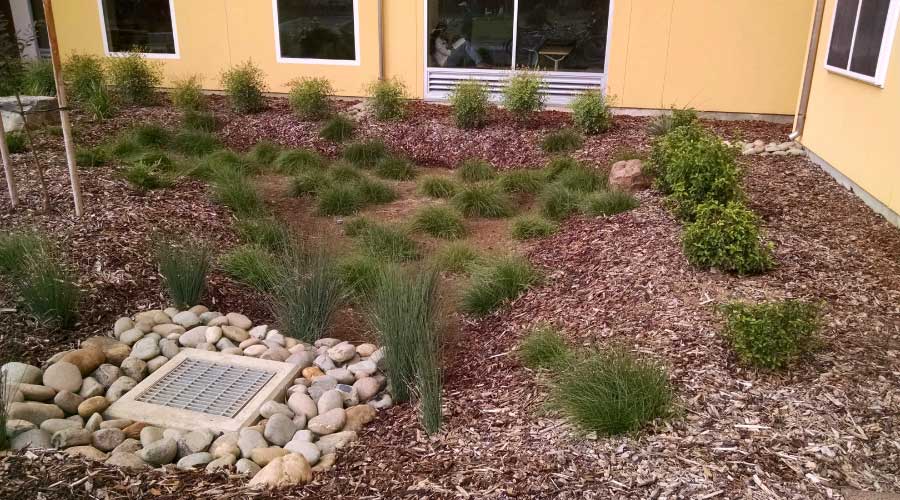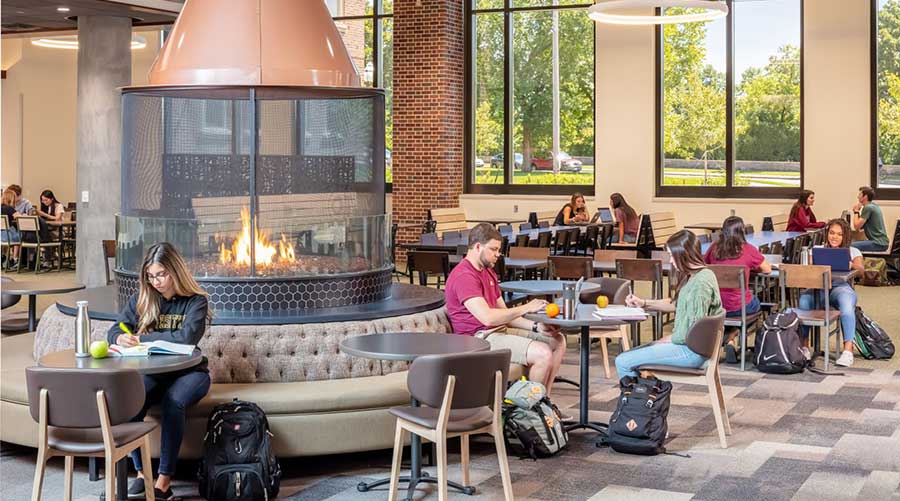Maximizing Flexible Space in Office Design Reduces Costs
For years the trend was to define a space for each employee. Regardless of whether it was an office or a cubicle, it was a fixed amount of space on the floor plan. But there's a growing realization that what matters is not the sheer number of workstations, but instead how the workspace is used. By taking advantage of the flexibility allowed by technology and accepted by employees, a space can accommodate more employees than it can cubicles. With many employees spending more time out of the office, either on the road or telecommuting, it's increasingly important for workstations to accommodate more than one worker.
"We're definitely seeing seat ratios changing," says Polucci. "For forever, it was a 1-1 ratio, one seat per person, but it's definitely climbing."
Consulting firm Booz Allen Hamilton has been rolling out a mandatory hoteling policy across its offices, setting up a certain amount of space that can be reserved by workers who are in the office only occasionally. The policy means that many employees will no longer have dedicated office space. Certain positions that require being in a particular place, such as receptionists, are exempt, but for the most part, if employees below a particular level on the org chart want to work in the office, they have to reserve a space. Other companies are setting up "touchdown" areas that may be no more complex than a phone, a power outlet and either wired or wireless Internet access, which is most likely all an employee who regularly works remotely would need when in the office.
Space and Dollar Savings
Hoteling and other alternative office strategies have long been used to reduce corporate real estate costs, and the concept of flexible space is catching on. As part of the HOK/IFMA survey, the distributed work programs at 10 corporations were studied. While each corporation does things differently, one recurring theme was achieving savings in both money and space. For example, Microsoft reports a 30 percent increase in the number of people using a particular space, while Sprint Nextel saved $80 million over four years by being able to cut its real estate portfolio.
While the methods used by each company varied, they all used flexible space in some way to meet the goal of maximizing the efficiency of the space and not allowing it to go unused.
Avoiding idle space whenever possible is a huge help in office design, Rice says. "If you go into most corporate spaces — but it's true for educational spaces as well — space goes unused a lot," Rice says. "Our studies have shown that most corporate space is unused 70 percent of the workweek. "
That mostly empty space offers a major opportunity for savings and sustainability when it comes to planning. But squeezing out wasted space isn't the whole story. It's still important to keep a close eye on the resources needed to build a space and to minimize the overall environmental impact of the space.
"The greenest building is the one that is never built," Rice says. But "if you can reduce the amount of material and energy and transport that are needed to create a new space, you are doing the greenest thing possible."
Related Topics:














